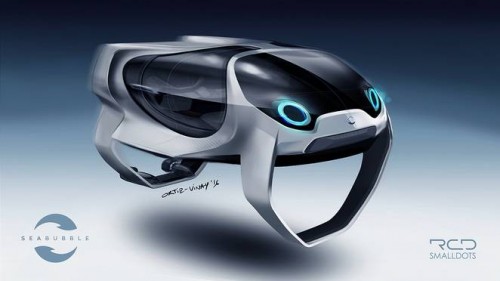RECOMMENDED VIDEOS

The EcoBoomer - All Electric, Zero Emissions, Eco-Friendly
EcoBoomer Co. Ltd.

DRÄXLMAIER Green Logistics
DRÄXLMAIER Group

ECO.3 Surface Guard
Hydros Solutions Ltd

Gogoro Plus
Gogoro Inc.

NEUTO Dry Hydrogen Auto-Therapy - Channel 8 News
Neutrinos
Related Stories
Students compete to design energy-efficient, battery-powered rail vehicles
California makes huge investment in ‘widespread transportation electrification
EvoWheel converts almost any bicycle into an electric bike in just 30 seconds
The E-Fan X jet heralds an electric passenger plane revolution
Manta5’s new electric water bike lets you cycle on rivers and lakes
13 Apr, 2017

French startup will put 'flying' electric water taxis to work in Paris
Green Transportation & Logistics | FRANCE | 04 Apr, 2017
Published by : Eco Media Asia
It's like Uber for 'flying' water cars, with an über-cute name: SeaBubbles.
This summer, Parisians will get their first taste of 'flying' cars, although they will only 'fly' about two feet above the surface, and these electric hydrofoil water taxis will represent a new angle on zero-carbon transportation, using an underutilized infrastructure -- the waterways in and around cities.
With many, if not most, of the world's cities being either on a river or with an ocean facing, the waterway is essentially a piece of the infrastructure, similar to roads or rails, but are all too often only used for commercial or recreational purposes. Some cities do have boat services that can offer transportation to tourists, but they tend to run on fossil fuels and in many cases, can contribute to other negative impacts, such as an increase in wakes that may lead to riverbank erosion. But an alternative system is in the works, with the oh-so-cute name of SeaBubbles, which promises a clean, quiet, and quick option for commuters and tourists alike.


SeaBubbles, which expects to launch its first pilot boats in Paris sometime after June of this year, has developed a futuristic looking water taxi that could be one of the first green maritime transportation systems. as they are battery driven hydrofoils that are charged with solar power and "generate no waves at full speed." The system is the brainchild of Alain Thébault, who set the Double World Sailing Speed Record with an experimental hydrofoil called the Hydroptère, and Anders Bringdal, who set a Windsurf World Speed Record in 2012.

The SeaBubbles transports will be made from fiberglass and high-density foam, and use battery driven electric motors to achieve 6-8 knots in the water, and to have a range of 80-100 km per charge, thanks in part to the hydrofoil design, which is said to be responsible for the boat's "40% less drag than a similar sized motor boat." The SeaBubbles will recharge at their docks, where solar and wave or tidal energy will provide the electricity.
The company expects to have its first production units ready in June of 2017. More info is available at SeaBubbles.
Article from treehugger.com
by Derek Markham
